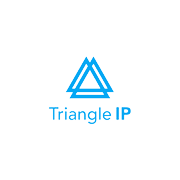North Carolina State University Patent Portfolio Statistics
Profile Summary
This article summarizes the perfomance of the assignee in the recent years. The overall statistics for this portfolio help to analyze the areas where the assignee is performing well. The filing trend, perfomance across the tech centers and the perfomance of the recent applications has been mentioned below. All the stats are calculated based on the perfomance in USPTO.
How does the overall patent portfolio of North Carolina State University look like?
| Assignee | Art Units | |
| Total Applications: | 1,290 | 2,259,302 |
| Granted Patents: | 803 | 1,328,897 |
| Grant Index | 80.3% ↑ | 71.64% |
| Abandoned/Rejected Applications: | 197 (19.7%) | 526,067 (28.36%) |
| In-Process Applications: | 286 | 404,338 |
| Average Grant Time: | 2.74 Years ↑ | 2.65 Years |
| Average Office Actions: | 1.52 ↓ | 1.57 |
Which Technology Area North Carolina State University is filing most patents in? (Last 10 years)
| Art Unit | Definition | Total Applications |
| Opap | Parked GAU | 95 |
| 1661 | Plants | 91 |
| 1663 | Plants | 33 |
| 1638 | – | 24 |
| 1626 | Organic Chemistry | 18 |
How many patents are North Carolina State University filing every year?
| Year | Total Applications | Predicted |
| 2022 | 0* | 452 |
| 2021 | 69* | 427 |
| 2020 | 96 | 379 |
| 2019 | 88 | 88 |
| 2018 | 55 | – |
| 2017 | 59 | – |
| 2016 | 65 | – |
| 2015 | 53 | – |
| 2014 | 55 | – |
| 2013 | 43 | – |
*The drop in the number of applications filed in last two years compared to previous years is because applications can take up to 18 months to get published
Recently filed patent applications of North Carolina State University in USPTO?
Application number: 17/617,438
Abstract:
Publication date: –
Applicant: North Carolina State University
Inventors: Lin Ning
Publication number: US20220231247A1
Application number: 17/614,787
Abstract:
Publication date: –
Applicant: North Carolina State University
Inventors: Carr Ho Hoi Yi
Publication number: US20220080192A1
Application number: 17/536,355
Abstract:
Publication date: 2022-03-17
Applicant: North Carolina State University
Inventors: Christopher Fesmire
How are North Carolina State University’s applications performing in USPTO?
| Application Number | Title | Status | Art Unit | Examiner |
| 17/617,438 | Adaptive Deep Reuse: Accelerating Cnn Training On The Fly | Docketed New Case – Ready for Examination | OPAP | Central, Docket |
| 17/614,787 | Heat Insulating Transparent Tandem Organic Solar Cells | Docketed New Case – Ready for Examination | OPAP | Central, Docket |
| 17/536,355 | Methods And Apparatus For Modifying Or Killing Cells By Manipulating The Cell Membrane Charging Time | Docketed New Case – Ready for Examination | OPAP | Central, Docket |
| 17/521,504 | Green Epoxy Resin With Biobinder From Manure | Docketed New Case – Ready for Examination | OPAP | Central, Docket |
| 17/609,107 | Suspensions Including Cellulose Nanofibril And Polyester | Docketed New Case – Ready for Examination | OPAP | Central, Docket |

